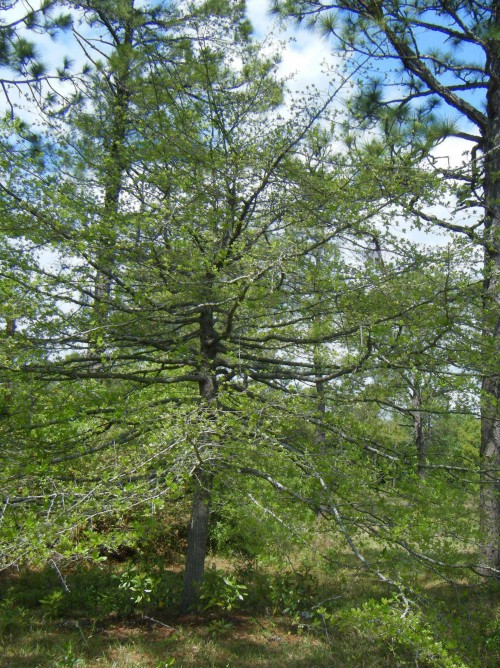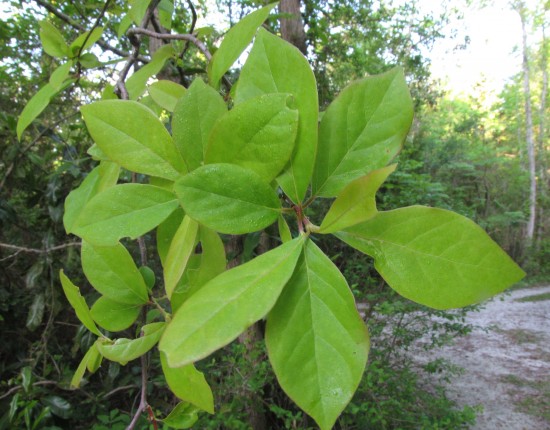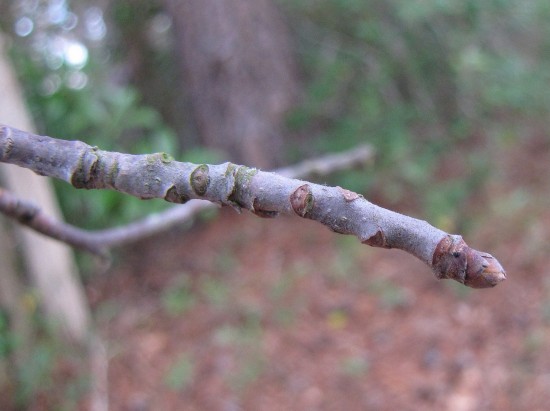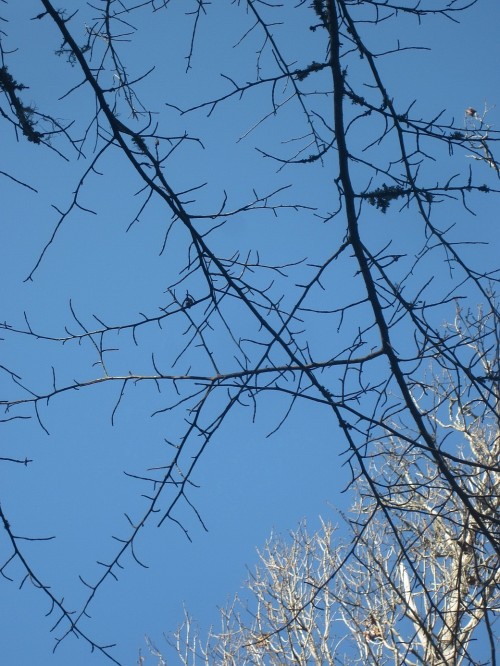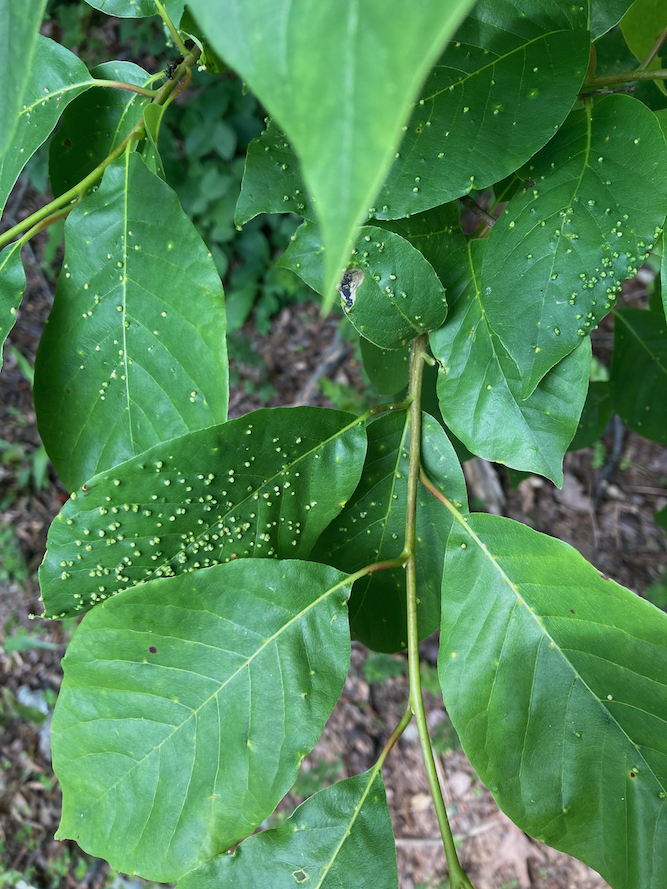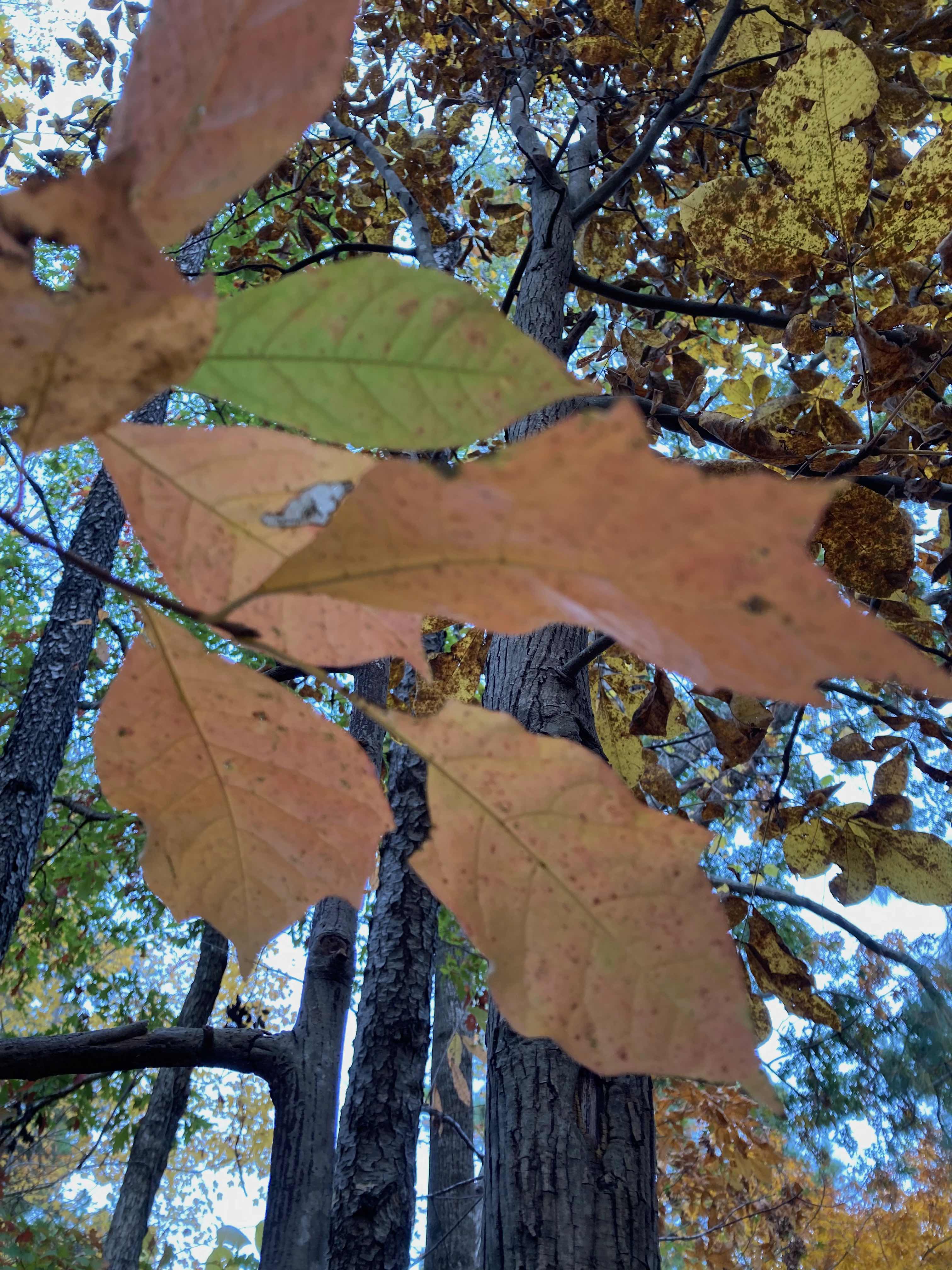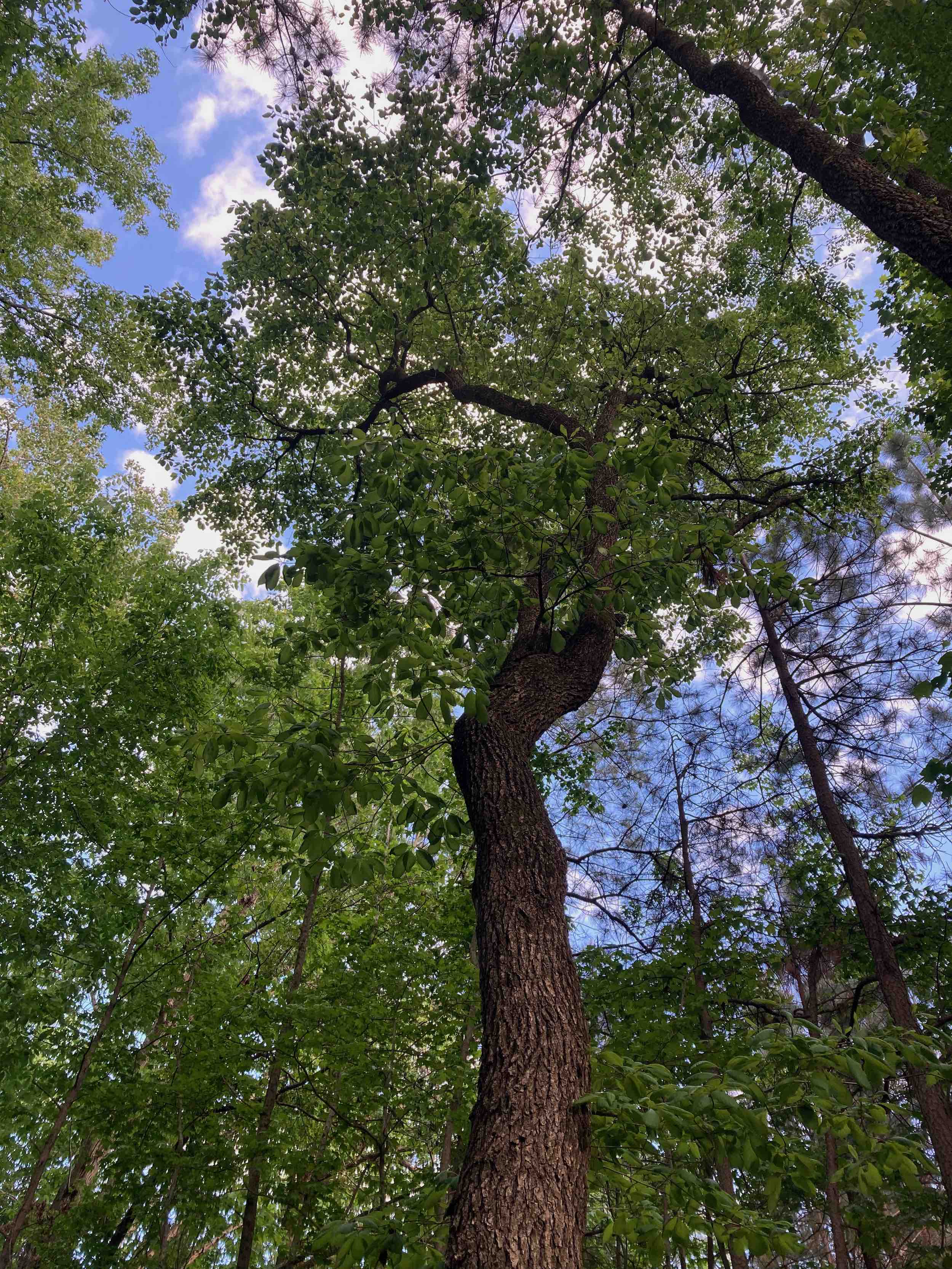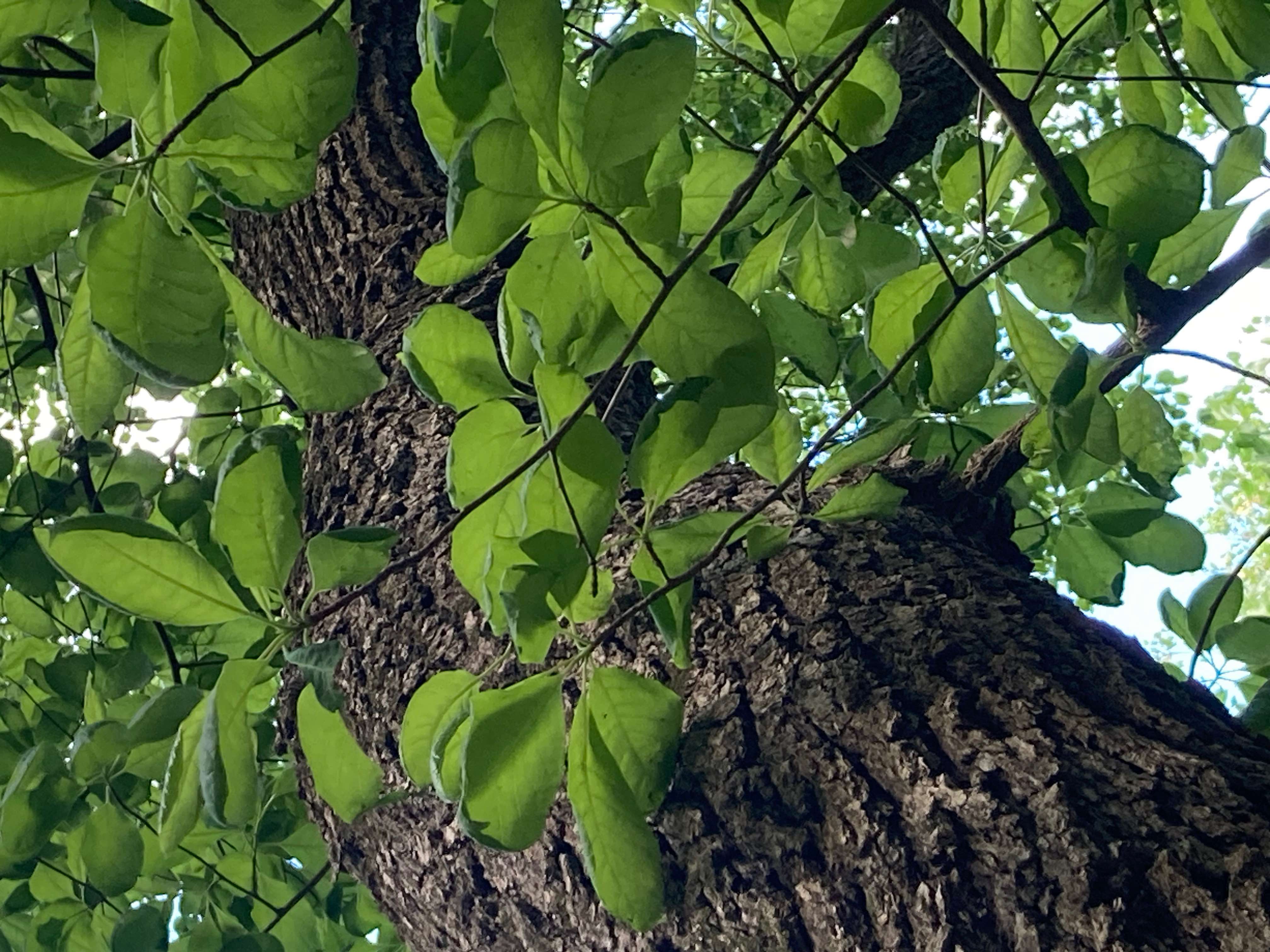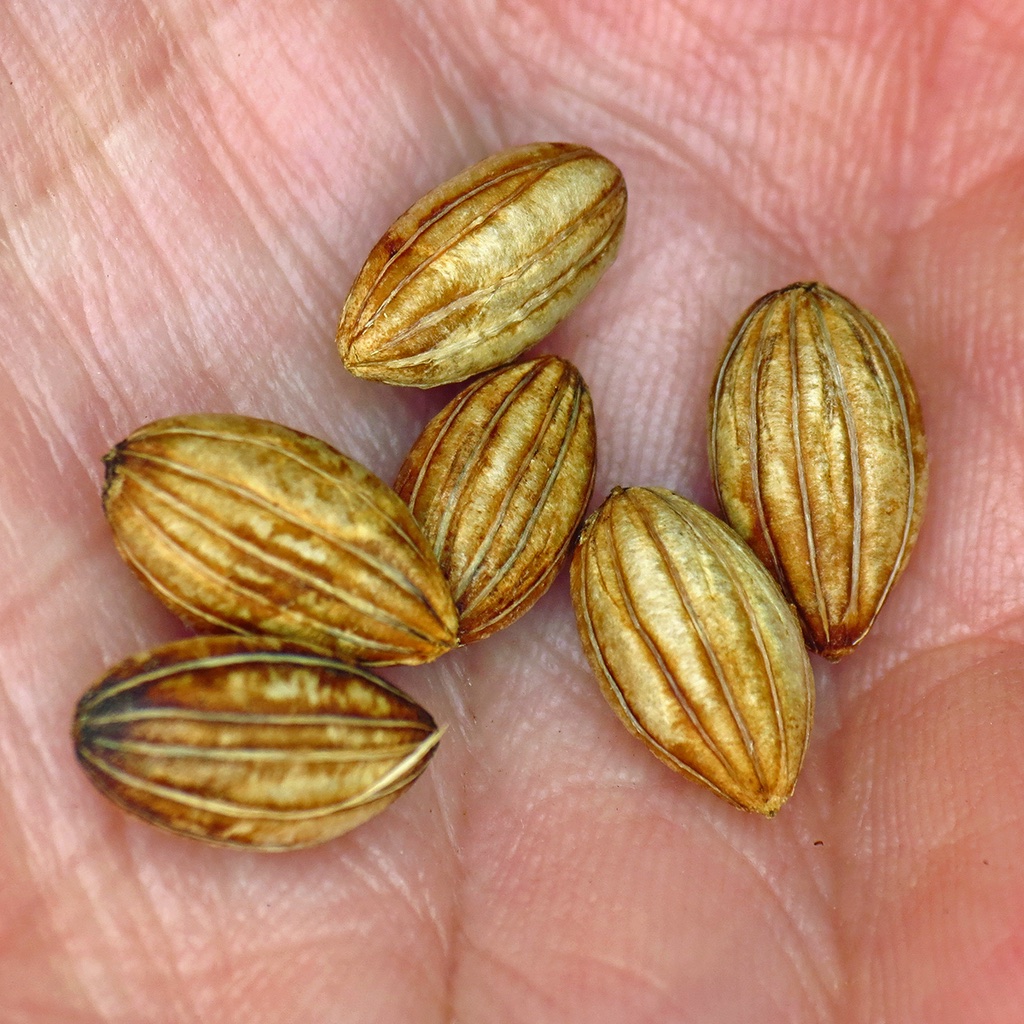NC Native Plant Society:
Plant Details
Nyssa sylvatica
Blackgum, Black Gum, Black Tupelo, Sourgum, Pepperidge, Tupelo Gum
Scientific Name: |
Nyssa sylvatica |
|---|---|
Genus: |
Nyssa |
Species Epithet: |
sylvatica |
Common Name: |
Blackgum, Black Gum, Black Tupelo, Sourgum, Pepperidge, Tupelo Gum |
Plant Type |
Tree |
Life Cycle |
Perennial |
Plant Family |
Nyssaceae (Tupelo Family) |
Native/Alien: |
NC Native |
Size: |
36-72 ft. |
Bloom Color(s): |
White, Green |
Light: |
Sun - 6 or more hours of sun per day, Part Shade - 2 to 6 hours of sun per day |
Soil Moisture: |
Dry, Moist, Wet |
Bloom Time: |
April, May, June |
Growing Area: |
Mountains, Piedmont, Sandhills, Coastal Plain |
Habitat Description: |
Dry or mesic upland forests, less commonly in bottomlands, pine savannas, or upland depressions, where occasionally inundated briefly (Weakley 2015). Common throughout NC. |
Leaf Arrangement: |
Alternate |
Leaf Retention: |
Deciduous |
Leaf Type: |
Leaves veined, not needle-like or scale-like |
Leaf Form: |
Simple |
Life Cycle: |
Perennial |
Wildlife Value: |
Highest Wildlife Value |
Landscape Value: |
Highly Recommended and Available |
State Rank: |
S5: Secure (*Key) |
Global Rank: |
G5 - Secure (*Key) |
Notes: |
"A handsome ornamental and shade tree, Black Tupelo is also a honey plant. The juicy fruit is consumed by many birds and mammals." Ladybird Johnson Wildflower Center |
|
Blackgum, Nyssa sylvatica Blackgum has dense foliage, brilliant red fall color, and small blue-black fruit attractive to wildlife. It's also an important bee tree for honey. It grows in many habitats, from moist woods along streams to dry uplands.
Charley Winterbauer, April 2012, Wilmington |
|
|
Leaves Blackgum leaves are easily mistaken for Persimmon (Diospyros virginiana), but Blackgum leaves are usually glossy above and will sometimes have a few teeth on the margins. Blackgum twigs have terminal buds which Persimmons lack. |
|
|
Twig |
|
|
Branching pattern Blackgum branches usually are short and come off the tree at right angles. Lower branches of young trees may have a distinct droop. |
|
|
Leaves can sometimes have 1-2 small toothlike projections on the leaf margins Guilford County, North Carolina
Bettina Darveaux |
|
|
Sporting some Fall color. Tooth-like projections on the margins are very apparent. Orange County, NC
Bettina Darveaux |
|
|
Deeply furrowed bark Orange County, NC
Bettina Darveaux |
|
|
Close-up of bark. The leaf margins are curled in this picture - most likely evidence of damage from a late spring frost. Orange County, NC
Bettina Darveaux |
|
|
Cleaned seeds from cultivated plant. Watauga Co., NC
Annkatrin Rose |
|
Links: |
|
back to top
go to plant details search
go to plant images search
go to gallery home
back to Initial n Gallery
back to orchids
back to Carnivorous Plants
back to Trilliums

